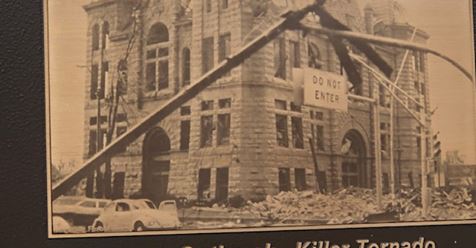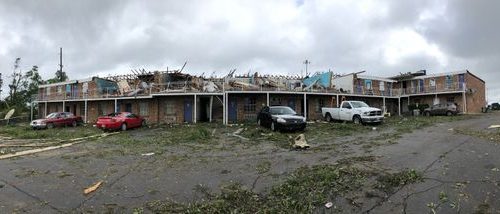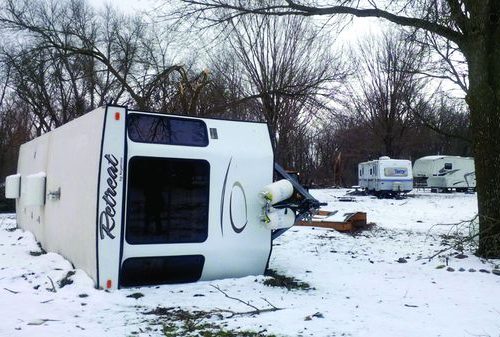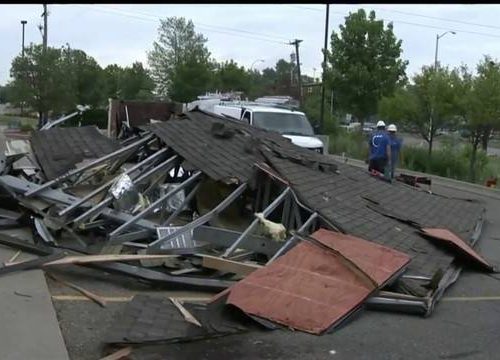MONTICELLO, Ind.–Forty five years ago this week, an F4 tornado hit Monticello. It was part of the April 3, 1974, Super Outbreak. Though the damage in Indiana was not limited to White County, the twister that struck at 5:17 p.m., was the longest tracked tornado of that day.
The church van
It stayed on the ground for over 100 miles, beginning in Otterbein, and dissipating north of Ft. Wayne.
“Five people lost their lives that day off that bridge,” said Rod Poole. He was pointing at the Washington St. bridge, where a church van carrying six girls from Ft. Wayne, was swept over the side and 50 ft. down into the Tippecanoe River.
“They had cranes there and wreckers trying to get it out,” he recalled. “They got it out and then they had to look for the people.”
The tornado destroyed many homes and businesses, but also two major structures: a railroad bridge over the same river, about a quarter mile downstream, and the White County courthouse.
“The greenish, browning color, I know everybody says they sound like a train. Well, they do. It was just a real deep sound and an ugly color.”
Poole, now head of the city’s water department, is partly responsible for building a memorial to the victims who died in Monticello. Twenty-one tornadoes happened in Indiana that day. At least 47 Hoosiers died. At the time it was considered the largest outbreak in U.S. history, with 148 tornadoes in 24 hours. That record was more than doubled in April 2011.
The White County courthouse
Larry Crab was a biology teacher and coach at the high school. He remembers nearly being sucked out of the high school, and seeing the gutted courthouse, where a safe went from the third floor, all the way through to the first, and the woman who was narrowly missed.
“Katie Wolf was her name. She was a clerk treasurer. It came through her room and missed her by maybe 12 or 15 ft., or she would’ve gotten smashed,” he said. Crab remembered talking to people, including scientists, after the railroad bridge was lifted and offset.
The river and the memories
“There were witnesses who saw this, that it actually sucked the river dry. I think it was for like half a minute,” said Crab. He said when the water came back down it totaled a factory that sat on the banks of the river.
At the White County Historical Society, you can purchase two books (an older version and a newer version) of memories and pictures from the day of the storm, and the weeks after.
The tornado killed 10 people in White County, and at least seven more people before it dissipated. It also left memories that are strong enough to be clear after nearly half a century.
by Chris Davis (2019, April 1) WIBC





